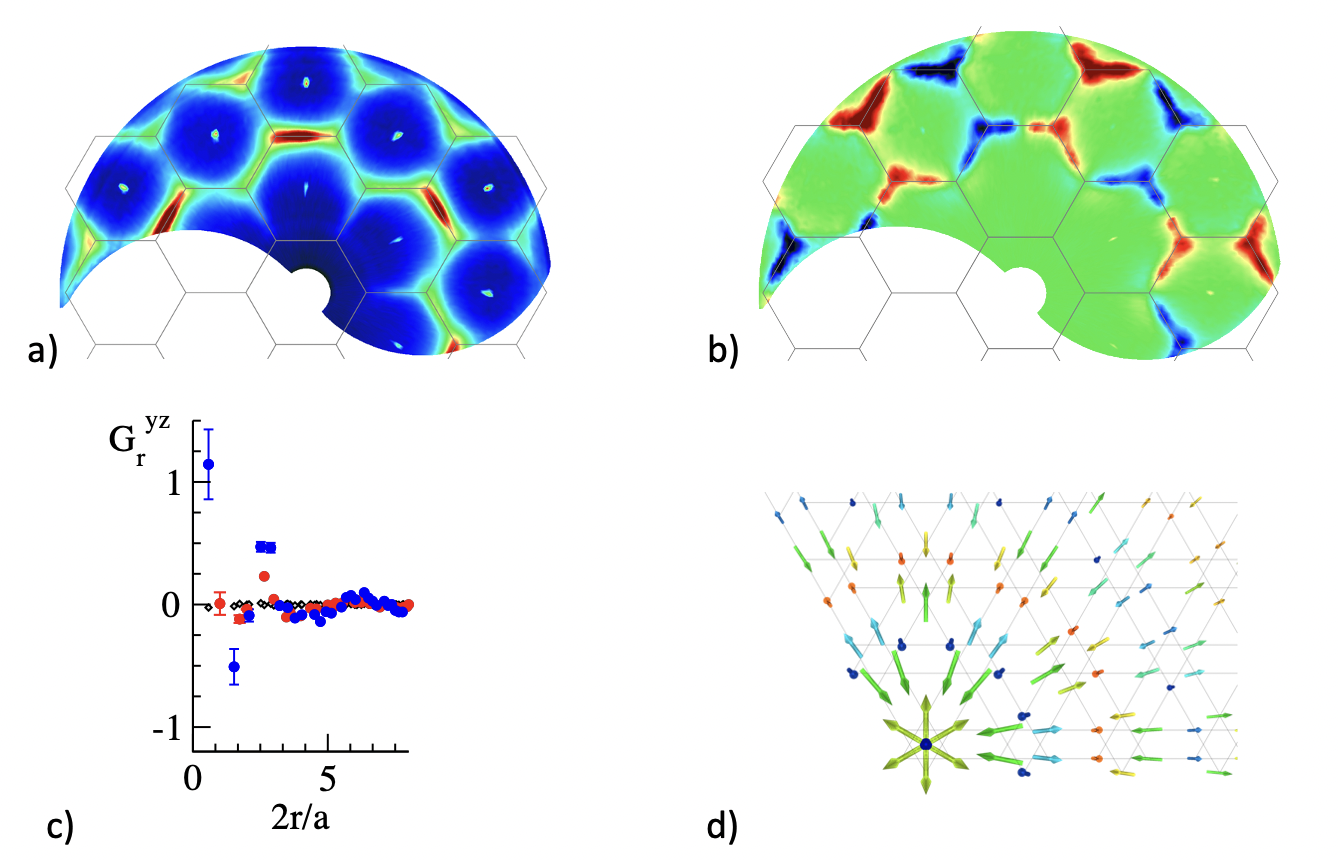Why?
Spin liquids are a topical and fascinating subject of condensed matter physics, fueled by the hope to create novel ground-states of matter. Typically, the combination of antiferromagnetic interactions with strong frustration leads to a rich variety of highly correlated spin states rather than to conventional order. Experimental research, however, has remained inconclusive in respect to a fundamental question how condensed matter systems like cooperative spins in a crystalline structure can display ground-states without long-range-order. We report for the first time a liquid-like magnetic ground state with a very peculiar vector chirality and non-collinear solitonic structure in the layered kagome system YBaCo3FeO7, lumps of spins appearing in a cylindrical, cycloidal wave of rather short period. Besides the beauty of observation, we provide a fundamental theoretical analysis of such an amorphous ground state with a classical mechanism based on antisymmetric exchange, which arise from broken symmetry along the exchange paths. As a side note, the present scenario displays similarities to the avoided phase transition in coupled gauge and matter fields for subnuclear particles. Chiral properties are invisible to conventional neutron scattering, but show up in the antisymmetric scattering of polarized neutrons. There are many frustrated spin systems, where the lack of long-range order may originate from a similar yet hidden chirality.

Figure 1. (a) polarised diffuse neutron scattering from YBaCo3FeO7 at T=4K; (b) antisymmetry of scattering and chiral structure factor S(Q); (c) cycloidal pair correlation function and (d) lump pattern.
How?
The experiments were performed at the diffuse neutron spectrometer DNS at MLZ Munich. We used a single domain crystal and applied polarized neutrons to measure the spin-flip scattering with polarization and polarization reversal along the scattering vector Q with a newly developed methodology and analysis. The antisymmetry of the polarised diffuse scattering terms (a) yields the Fourier transform of the vector chirality C = S x S' (b); data have been calibrated to absolute intensities including magnetic form factors. Note, the antisymmetry is perpendicular to Q with threefold rotational symmetry. The pattern allows to identify cycloidal spin correlations, which emanate from trigonal sites connecting the kagome layers in this compound. A real-space interpretation of the spin correlations is obtained by a Fourier analysis in terms of cycloidal correlations, with Fourier coefficient displayed in c), which give an approximate picture of the spin lump pattern shown in (d). The observed pattern can be traced back to the underlying antisymmetric exchange in the system.
What´s next?
The investigated compound appears to be an ideal model system with vector chirality for a disordered and classical spin liquid ground state. We now aim to achieve a microscopic modeling with a generic Hamiltonian. This can be done in comparison to the experimental data based on analytical approximations and Monte Carlo simulations, as well as from estimates by first-principal calculations. These studies may stimulate investigations in other frustrated spin systems, in which antisymmetric exchange may arise from broken spatial symmetry along the exchange paths.
Who?
This work resulted from an international collaboration between Werner Schweika, a fellow of the European Spallation Source and further affiliated at the Research Centre Jülich (Germany), Johannes Reim, a post-doc and neutron researcher from Tohoku University (Japan), Martin Valldor, a chemist and crystal grower from the Leibniz Institute Dresden (Germany) now at Oslo University (Norway) and Ulrich K. Rößler, a theoretical physicist from the Leibniz Institut Dresden (Germany)
Cite: Physical Review X 12 021029 (2022)
For the original articles, please visit: https://doi.org/10.1103/PhysRevX.12.021029
Contact:
Werner Schweika
Senior Scientist for Diffraction
European Spallation Source ERIC, Lund (ESS)
E-mail: werner.schweika@ess.eu
